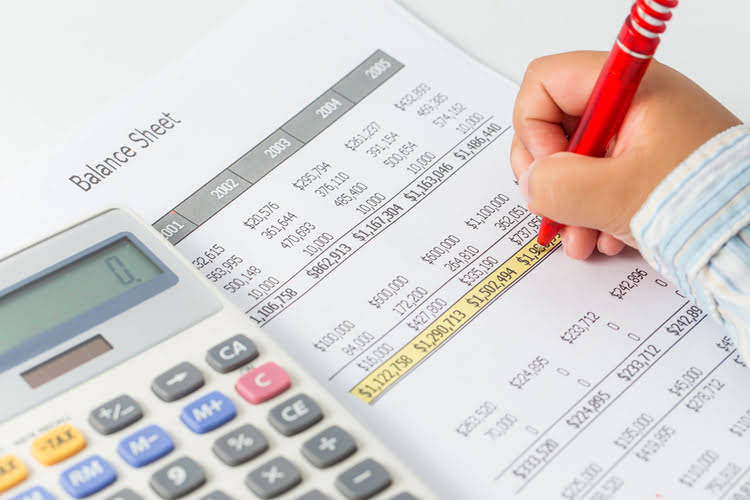Bookkeeping
Difference between fixed and current assets with examples

Non-current assets are essential for the company’s long-term operations and are typically held for their productive use rather than being held for resale. Aside from fixed assets and intangible assets, other types of noncurrent assets include long-term investments. Net fixed assets are the tangible, long-term assets a company owns, after subtracting accumulated depreciation.
Cash Flow Statement
These assets support the production process, enable service delivery, and provide the infrastructure necessary for sustained business growth. While current assets facilitate smooth ongoing operations, fixed assets ensure the business has the stability and resources to operate efficiently over the long term. Noncurrent assets (like fixed assets) cannot be liquidated readily to cash to meet short-term operational expenses or investments. Fixed assets have a useful life of over one year, while current assets are expected to be liquidated within one fiscal year or one operating cycle. Companies can rely on the sale of current assets if they quickly need cash, but they cannot with fixed assets. Net fixed assets are also known as “net property, plant, and equipment” (net PP&E).
Fixed assets

If a company sells produce, the delivery trucks it owns and uses are fixed assets. If a business creates a company parking lot, the parking lot is a fixed asset. However, personal vehicles used to get to work are not considered fixed assets. Additionally, buying rock salt to melt ice in the parking lot is an expense. A fixed asset is a long-term asset or an asset held by the company for a period longer than that of an accounting period such as property, plant, …. Concretely, from its creation, a company incurs purchases in order to acquire the goods which constitute its heritage.

Why should businesses differentiate between fixed assets and current assets?
Understanding how fixed assets function in various industries can offer valuable insights into their strategic importance. Fixed assets, such as machinery, buildings, and vehicles, play crucial roles across different sectors, providing foundational support and enabling long-term operational efficiency. Also called long-term assets, fixed assets are held by a business with the intention of continuous use and not to be resold in a short period of time. No, an asset typically stays within its category (current or fixed) throughout its life.
- A high number of fixed assets can be used to expand the production level of a business as well.
- Fortunately for most companies, fixed assets come with their fair share of benefits in terms of tax returns.
- The classification of assets directly influences a company’s financial health.
- These assets are essential for the production of goods or services and are considered as long-term investments in the company’s growth and success.
- To fully understand net fixed assets, it’s important to know the key components that make up this figure.
- Current assets typically don’t depreciate because they are short-term.
Current assets are assets that are expected to be converted into cash or used up within one year, such as cash, accounts receivable, and inventory. These assets are essential for the day-to-day operations of a business and are typically more liquid than fixed assets. Fixed assets, on the other hand, are long-term assets that are used to generate revenue over an extended period of time, such as buildings, equipment, and vehicles. While fixed assets are crucial for the long-term success of a business, current assets are necessary for maintaining liquidity and meeting short-term financial obligations.
Accumulated Depreciation
If a business has any easy-to-convert current assets within one fiscal year, they identify as liquid assets. An asset is said to be a current asset when it is anticipated to be realised or intended to be sold or consumed within one year or the company’s normal operating cycle. Companies held the current asset in the form of cash or their conversion into cash or for using it in the providing goods and services. If the car is used in a company’s operations to generate income, such as a delivery vehicle, it may be considered a fixed asset. However, if the car is used for personal use, it is not considered a fixed asset and is not recorded on the company’s balance sheet.
- Additionally, liquid assets get reported based on current market value, while fixed assets are more to do with long-term value, being reported based on depreciation over time.
- Accumulated depreciation is a fundamental principle in accounting, especially in the areas of asset control and …
- A balance sheet lays out all of a business’s assets, liabilities, and owner equity on a single financial document.
- The majority of current assets are quite liquid; in fact, they are commonly called liquid assets.
- We’ve put together this article to help you better understand the differences between fixed assets vs. current assets, so continue reading so you avoid mistaking one for the other.
Do you own a business?
In short, products that are attained with the intention of not selling them or for short-term usage are fixed assets. As we stated earlier, fixed assets are usually intangible or longer-term, such as a building, land or even intellectual properties, making these hard to convert to cash in a short period of time. The structure for current assets on the balance sheet is a little more universal than fixed assets, but will still change somewhat from industry to industry. Below are some of the categories you might find under current assets. This is by no means a complete list, you may have more or less than the ones listed below.

Understanding these distinct purposes helps organizations plan their financial strategies effectively and allocate resources where they are needed most. Current assets, like cash and accounts receivable, are highly liquid and can be converted fixed asset accounting to cash within a year. This liquidity is crucial for covering short-term liabilities and operational needs. Understanding the distinction between current and fixed assets is crucial for effective financial management and reporting.
Both types of assets are important for a company’s overall financial health and stability. Fixed assets are noncurrent assets that are not easily converted to cash. Noncurrent assets also include long-term investments, deferred charges, and intangible assets. These assets won’t be depleted or sold within the accounting period. A fixed asset has a physical form and is reported on the balance sheet as PP&E. Companies purchase fixed assets to produce goods or services, for office and operating use, or to rent to third parties.